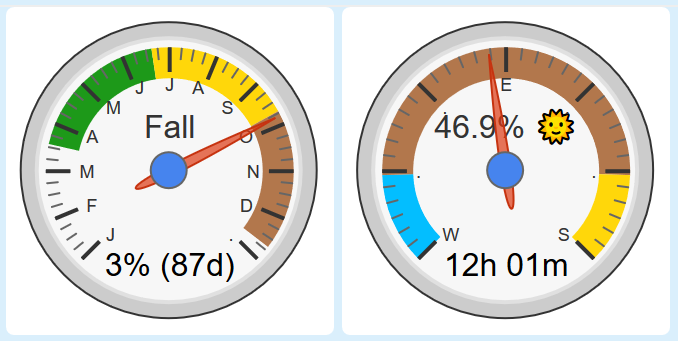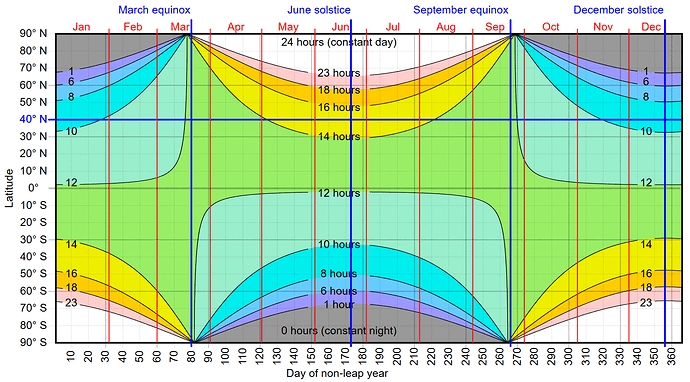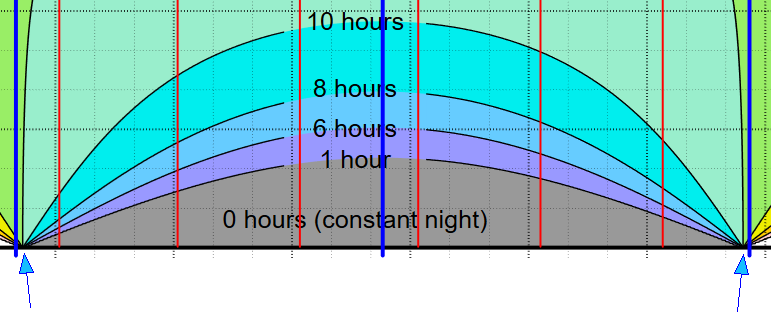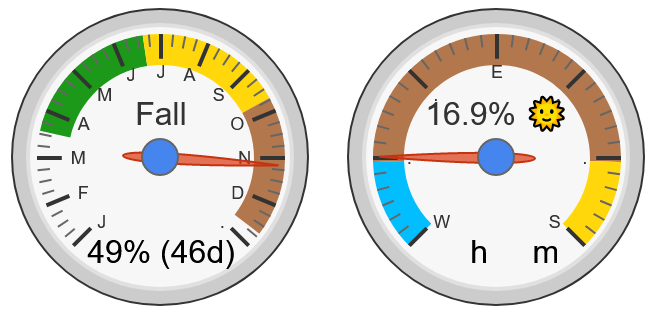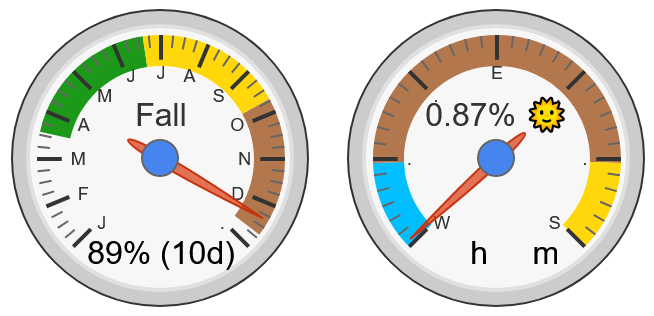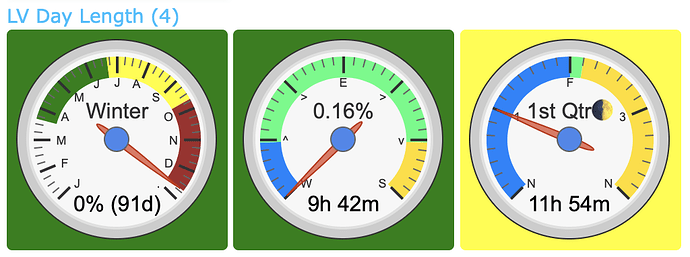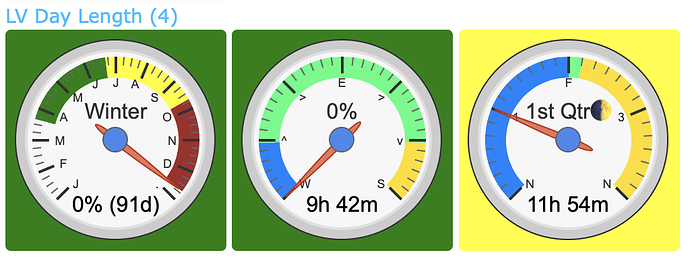… Three hours later…
Sorry guys… I cannot turn this off… LOL
So I have combined the data from my last two posts, and reached yet another startling discovery…
OK, quick recap with this fuzzy thumbnail:
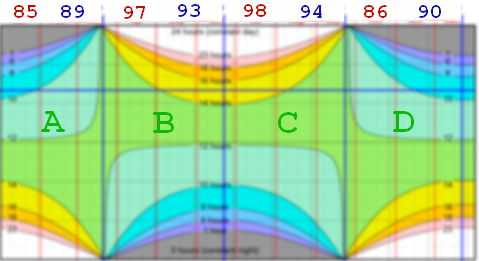
Solstices & Equinox are blue vertical lines. Blue numbers are the days between
B & C are about 4.5% longer durations than A & D
If we look at Solstices and Equilux, Red numbers are the days between.
(estimated for northern mid-latitudes)
B & C are about 7.6% longer durations than A & D
… but when we look south of the equator, here is where it gets interesting…
Alright, so we know a quarter year is about 91.31 days
… and we see that B & C are slightly more than this…
… and south of the equator, we see that the 12-hour mark angles up and down thru these latitudes…
So I would like to propose a better-worded theory…
When in the northern hemisphere, and
When measuring between the two Equilux…
The Spring/Summer duration is always longer than the Fall/Winter
(for my location, it is 195 vs 171 days)
… On the other hand…
When in the southern hemisphere, and
When measuring between the two Equilux…
The Spring/Summer duration is usually longer than the Fall/Winter
… but (and here is the addendum to my earlier statement), the extreme lower latitudes may actually have places where there are almost exactly six months between the two Equilux.
From these rough estimates, it looks like south of approx 45° S should be split fairly evenly.
To clarify, when comparing the space between Equinoxes (or Equiluxes), the only precise “half year” is about where my arrows are… (the Equilux date for extreme southern locations)
… I wonder if there is a name for this…
(Probably not though since Equilux wasn’t even coined until 2006)
